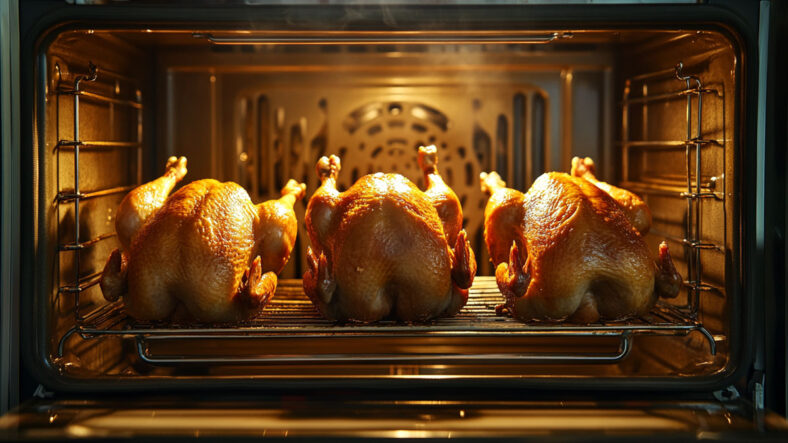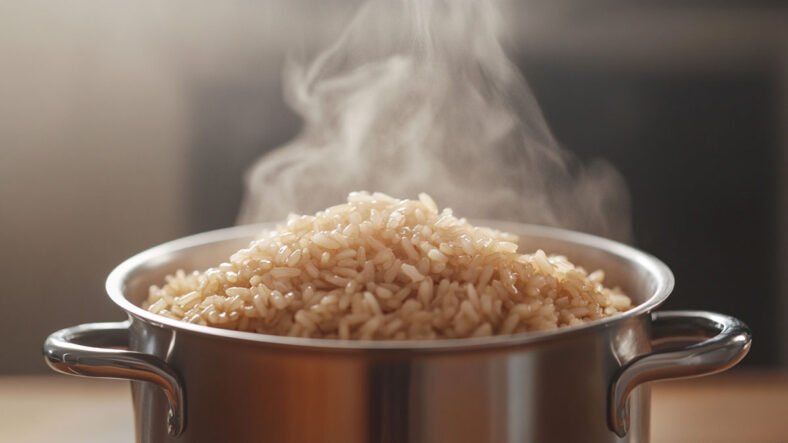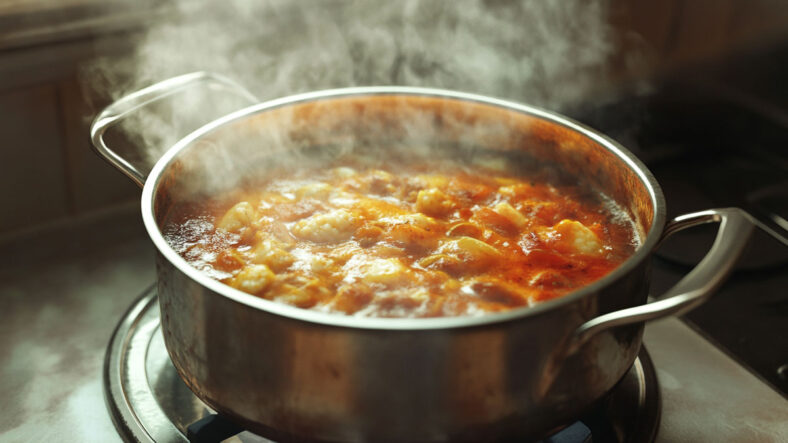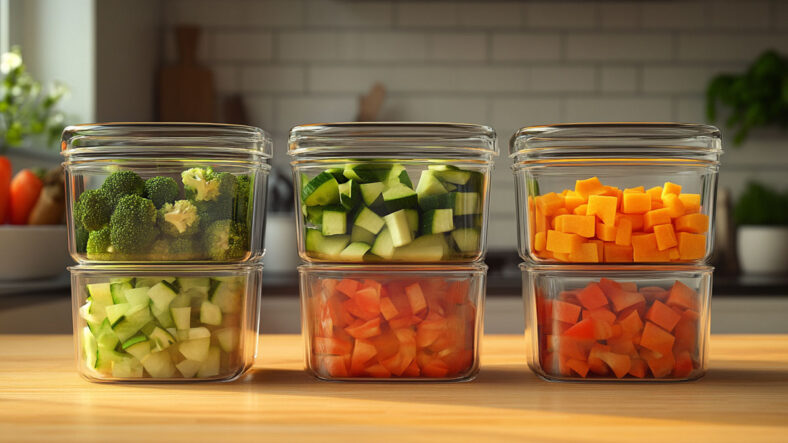
Meal prep tips have played a huge part in turning my health around since my scare in 2024. That wake-up call led to a complete lifestyle shift, including visits with heart and nutrition experts, and attending several food talks.
I went from barely thinking about what I ate to learning just how much food affects everything, energy, mood, heart health, blood sugar, and more.
In the beginning, my wife and I tried prepping full meals, but that didn’t last long. Now, we prep ingredients, like roasted chicken, chopped veggies, cooked grains, and homemade sauces, and store them in airtight containers.
All of this came from trial, error, and a lot of advice from experts. It’s not about being perfect, it’s about making healthy eating easier and more realistic, even when life gets busy.
1. Always set aside time to prep

When you’re hungry and staring at a choice between chopping veggies or just chucking something processed in the oven, it’s tough. Let’s be honest, healthy food is great for you, but it often takes more time than you feel like giving.
That’s why my wife and I now spend a couple of hours twice a week prepping food for the next 3–4 days. We don’t have a scheduled day or time, but if we’re both sitting about and ready to watch something on TV, we’ll check the fridge and if it’s needed, we’ll prep for a bit instead.
It’s made a massive difference. We waste almost no food now, and it’s helped my health loads. Don’t leave it to chance that you’ll get to it, especially if you’re not doing it alone. Schedules rarely line up perfectly, and when that happens, it’s far too easy to fall back on quick processed meals or a takeaway.
That’s why we prep when we both have the time. All we do is chop veggies, cook grains, and get ingredients ready in containers. When your food is prepped, making a healthy meal takes less time and feels easier when you’re busy or tired.
2. When shopping, focus on versatile ingredients

At the start, my wife and I tried prepping for specific meals we had planned. We had little containers for everything, but even with the prep done, there were days we just couldn’t be bothered.
After a long day, you don’t always want to follow a recipe, you just want to throw something in a pot and be done. That’s why we changed things up. Now, instead of prepping full meals, we prep ingredients.
For example, we’ll roast three chickens on Sunday, then break it down for easy meals over the coming several days. We’ll also prep veggies, salads, and sides like brown rice, sweet potato, and wraps. That way, we can mix and match depending on how we feel, like a chicken wrap with salad, or chicken with roasted veg.
Using flexible ingredients, like grains, veggies, and proteins, makes healthy eating easier. You don’t need to follow a plan every night. Just grab what’s prepped and put a meal together fast, with less stress and less time.
Also Read: 10 Budget-Friendly Superfoods Under $2 That Every Pantry Needs
3. If you can, cook your proteins in bulk

When we’ve just done the grocery shop and have fresh meat or fish, we either freeze it that day or cook it straight away. If we’re not eating it immediately, we break it down and pop it into containers.
It sounds like a faff, but having your protein already cooked means one less step when making a meal during busier days. It saves time and keeps us from giving in to the takeaway trap.
One thing we always do is write the date, and even the time, we cooked it on the container. That’s helped us cut way down on food waste. But it’s also important for safety, especially with fish. You want to make healthy meals, not take a chance on something that’s gone bad.
Cook up proteins like chicken, fish, or tofu in large amounts. And don’t forget to use your seasonings when you do this. Once cooked, keep them in the fridge to add to salads, wraps, or bowls during the week. Just heat, mix, and eat, it’s quick, easy, and helps you stay on track.
4. Prepare and portion grains ahead of time

We used to cook pasta, rice, and grains when cooking a meal. We no longer do this, instead, we cook things like wholemeal pasta and brown rice in bulk, then portion them out into containers and store them in the fridge.
We honestly didn’t know we could do that, and now those 30-to-45-minute meal cooks are more like 10. We’ve even started storing things like mashed sweet potato and other sides we eat often.
Our fridge is fuller now, sure, but if you’ve got the space for containers, it’s completely worth it. There’s nothing better than pulling out what you need and making a healthy, filling meal in just a few minutes.
Grains like rice, quinoa, and pasta can be cooked in big batches and kept for 3–4 days. Just heat and go—no stress, no long cooking time.
5. Prep sauce and dressings separately from ingredients

Did you know that many of the store-bought sauces and dressings are often loaded with sodium and sugars? Because of this, my wife and I have started making our own and storing them.
It has been therapeutic, working together to create something tasty we’ll use all week. We always store sauces and dressings separately from the ingredients, which lets us mix and match with whatever ingredients we have ready.
For example, my wife loves making a rich tomato sauce, and we’ll use it with pasta, meatballs, or other dishes across the week.
We don’t freeze full meals like lasagne or chilli anymore, but we do freeze the sauces we’ve made, mainly because our fridge is always packed. Having these delicious sauces on hand means we don’t end up eating the same thing over and over, and it gives us more choice without more effort. Plus, we’ve wasted way less food since doing this.
Make sauces like tahini dressing, peanut sauce, or tomato sauce in batches. Keep them in jars or containers in the fridge or freezer. They add flavour fast and give you more meal options with less work.
Also Read: The 10 Best Low-Sodium Foods for a Heart-Healthy Diet
6. Make One-Pot meals and repurpose your leftovers

When we first started meal prepping, we would freeze meals and too often forget about them. We would also sometimes struggle to find a meal to cook with all the leftovers we had for very specific recipes.
We solved this by breaking down veggies, proteins, and more into a well-seasoned ingredient, rather than a pre-cooked meal or for a specific recipe. By doing this we have been able to throw almost any mix of leftovers into a slow cooker and turn it into a stew.
By having a slow cooker or one pot, you can also turn your prepped ingredients into a meal without spending a lot of time in the kitchen. So, on the days you cannot be bothered to cook, this stops any thoughts turning to grabbing a takeaway.
The best part of this is that it works great to use up veggies that have been in the fridge for a few days. Turn leftover roasted veggies into a casserole or soup.
7. Consider investing in quality containers

We started out using old takeaway containers, but we quickly realised they were pretty useless. Then we moved to plastic ones, only to find out they contained phthalates, which isn’t great if you’re reusing them often.
Eventually, we picked up some glass mason jars and stackable containers that are airtight and super easy to clean. Since switching to glass, we can wash them properly and don’t worry as much about smells or stains. Just a heads-up, not all glass containers are safe for the freezer, so check before you freeze anything.
Using strong, safe containers keeps your food fresher for longer and stops it from picking up any weird tastes. It also means you’re not risking anything nasty getting into your meals. If you’re serious about meal prepping, it’s a smart investment.
With a little planning and the right tools, healthy eating can be quick and easy.
